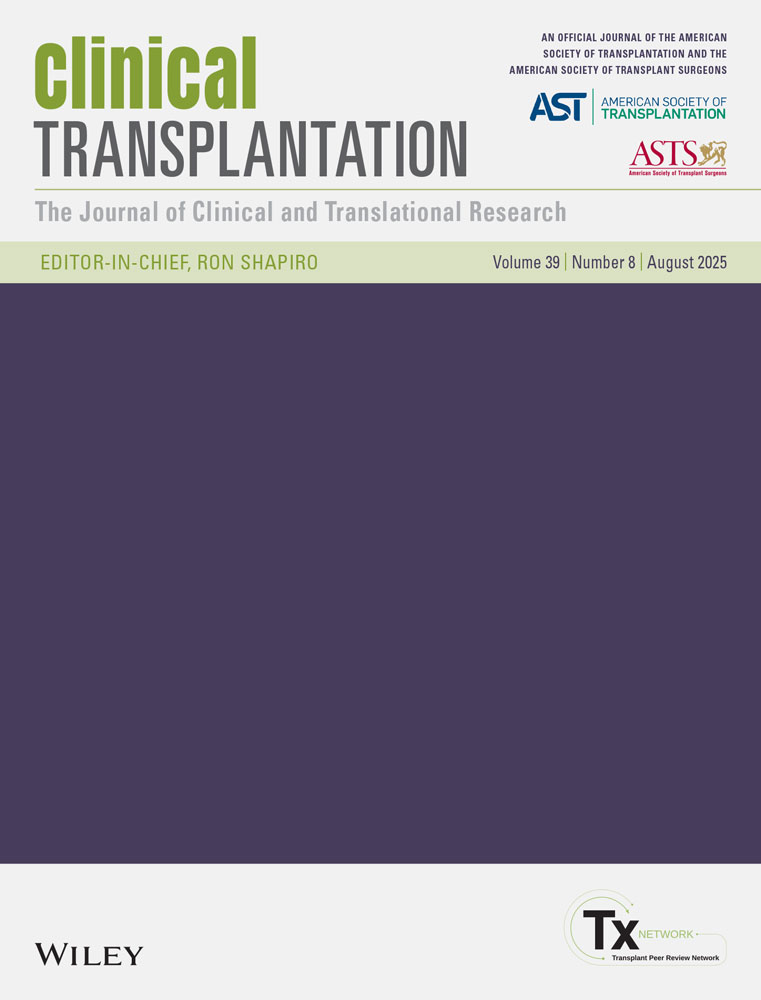A single center's clinical experience with quadruple immunosuppression including ATG or IL2 antibodies and mycophenolate mofetil in simultaneous pancreas–kidney transplants
Abstract
Acute rejection remains a major problem in simultaneous pancreas–kidney (SPK) transplant and occurs in 60–100% of the cases. With the introduction of mycophenolate mofetil (MMF) replacing azathioprine (AZA) as a basis immunosuppressant, reduced rates of rejection have been reported. This study investigates the frequency and clinical relevance of allograft rejection in SPK patients receiving anti-thymocyte globulin (ATG) or Basiliximab® induction therapy and cyclosporine Neoral® (CyA), MMF, steroid basis immunosuppression. Between December 1996 and October 1999, 21 consecutive patients (15 males, 6 females) received a SPK transplant at our institution with a mean±standard deviation (SD) age of 42±6 yr. Of these, 14 patients were treated with anti-thymocyte globulin (ATG) Fresenius® (rabbit) 3–5 mg/kg for 6±2 d, cyclosporine Neoral (CyA) (trough levels 350–400 ng/mL), MMF 3 g/d and low dose steroid therapy. Seven SPK patients were treated with Basiliximab (Simulect®, Novartis 20 mg on d 0 and d 4 post-transplant) instead of ATG. The patients had an average human leucocyte antigen (HLA) mismatch of 3.9/6 and a negative cross match. All patients remained on triple drug therapy. Three patients were switched to tacrolimus instead of Neoral for CyA intolerance. The mean±SD cold ischemia time (CIT) of the organs was 10.1±2.4 h for the pancreas and 10.5±2.6 h for the kidney. Results: Biopsy-proven rejection occurred in the kidney of 1 ATG patient (8%), which responded to steroid bolus therapy. One of the patients (14%) with Basiliximab induction developed renal allograft rejection, which was resolved after a 6-d course of anti-CD3 mAb (OKT3) treatment. All patients (100%) were free from rejection in the pancreas, as measured by urine amylase levels and glycemic control without the need for exogenous insulin with a mean glycosylated hemoglobin (HBA1C) of 5.1±0.7% and serum creatinine with a mean of 1.24±0.24 mg/dL in a mean follow-up period of 17±15 months (median 12, range 2–37). Conclusion: Triple drug immunosuppression including cyclosporine, MMF and low dose steroids with ATG or interleukin 2 (IL2) receptor antibodies induction therapy appears to be a very suitable immunosuppressive regimen for combined pancreas–kidney transplant (PKT) with a marked reduction in the incidence of rejection.




